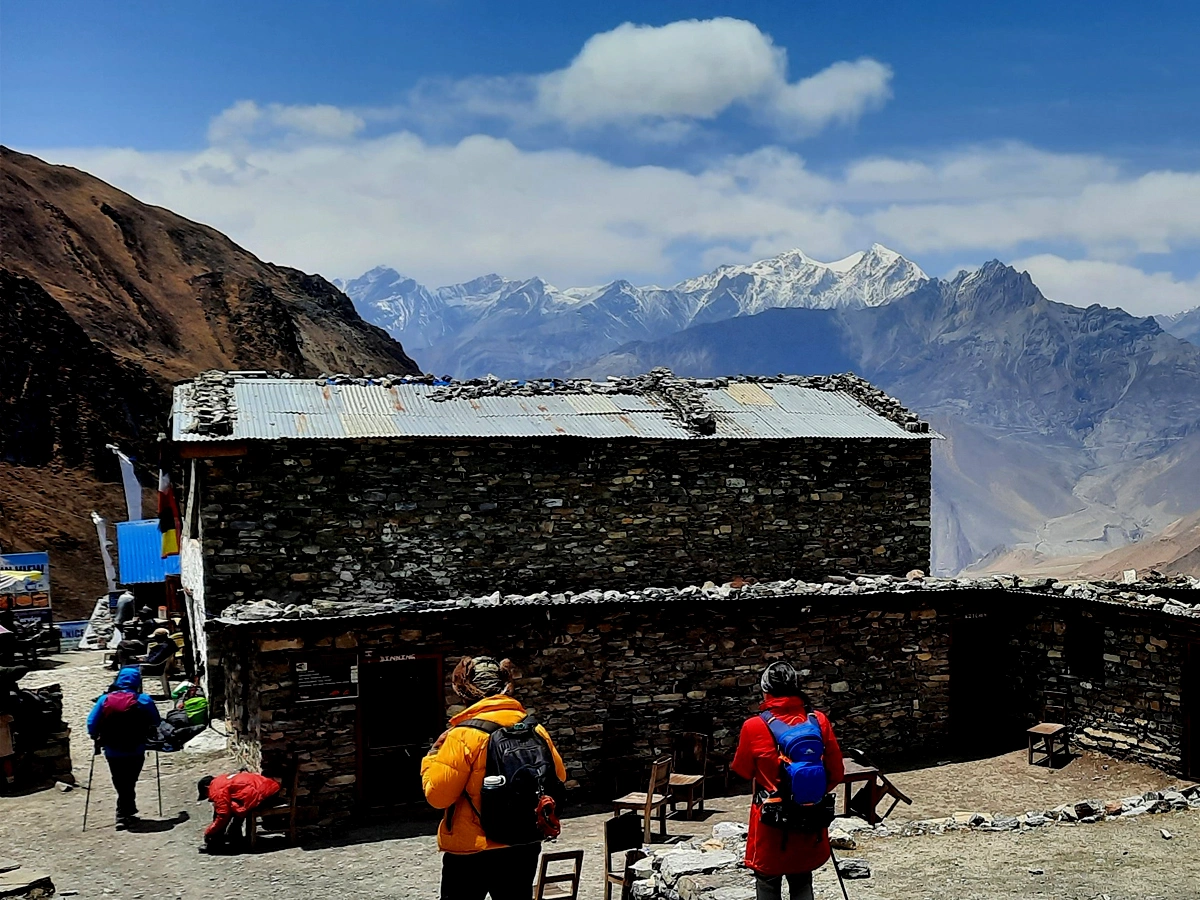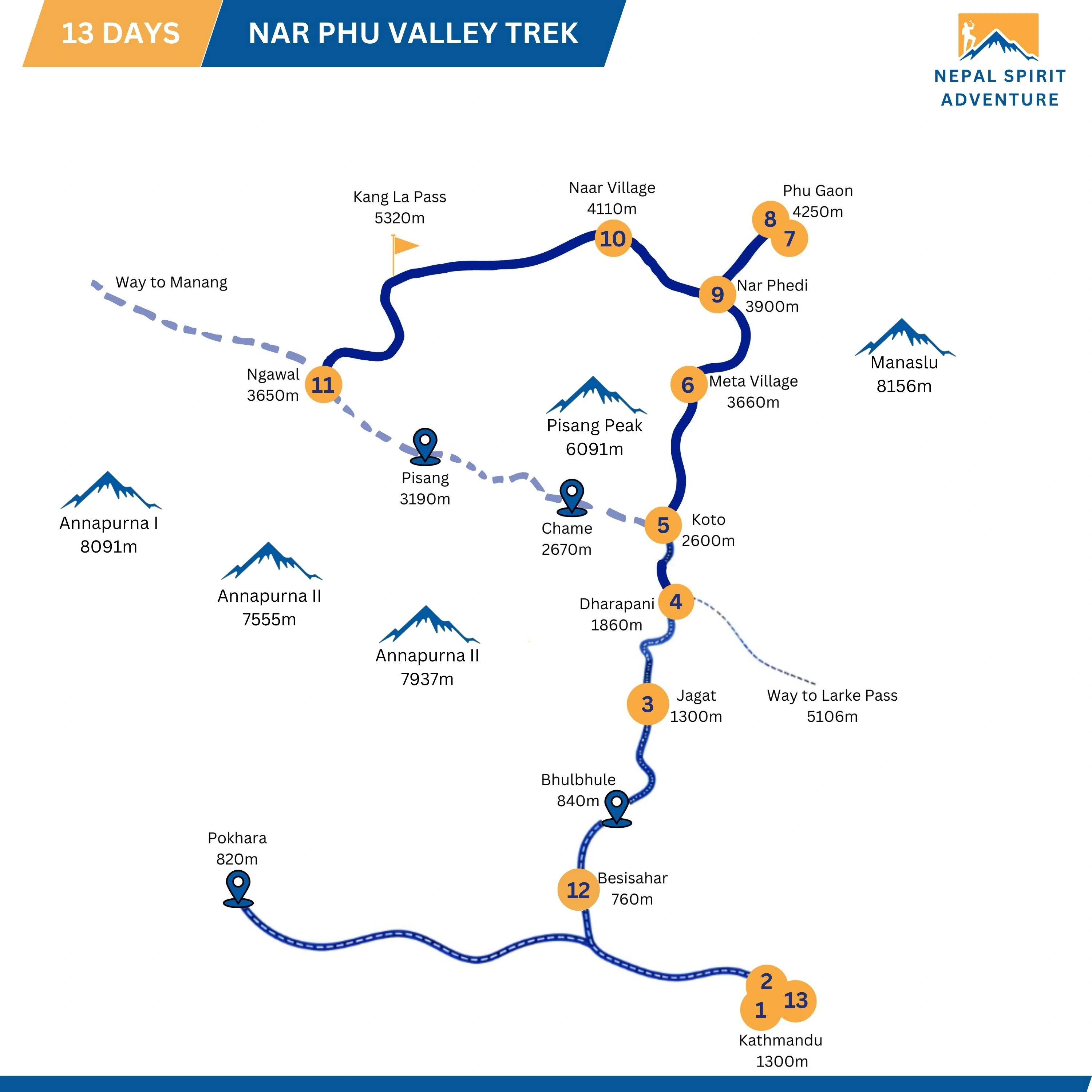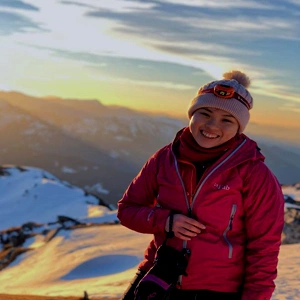The 13-day Nar Phu Valley trek itinerary takes you through a rugged, off-the-beaten-path, remote trek in the Manang district of Nepal. This foot walking route is one of the most popular trekking routes in the Annapurna region, and fewer tourists trek inside the Nar Phu Valley area. The trek offers through Tibetan-influenced Buddhist villages with spectacular mountain views, ancient Buddhist culture, and unique Tibetan heritage. The route includes the high Kangla Pass at 5,320m, which offers dramatic mountain views.
Nar Phu Valley Trek - 13 days
Are you planning to trek in Nepal away from the crowds, in a peaceful setting with stunning views of the Himalayas?
If so, the Nar Phu Valley trek is the perfect choice. This trek experiences fewer visitors, allowing for a more tranquil hiking experience. It is a relatively new trekking route that has been explored by only a small number of trekkers, making it an off-the-beaten-path destination. The itinerary features a unique combination of high passes and peaks, promising breathtaking mountain views throughout the journey.
The Nar Phu Valley Trek 11-Day itinerary takes you to an isolated valley that links the villages of Nar and Phu in the Manang district. This trek offers an off-the-beaten-path experience in the Annapurna region, following a classic trade route between Nepal and Tibet. The unique culture of Nar Phu, along with its typical heritage and architecture, provides an unforgettable experience similar to that in the Tibetan Plateau region.
Trekking in the Nar Phu Valley of Nepal is in a restricted area, requiring a special trekking permit. Additionally, it is mandatory to have a government-licensed trek guide. The Nar and Phu villages are situated in the Annapurna region, a conservation area that is part of the classic Annapurna Circuit trekking route. This trek is perfect for those seeking peace, cultural experiences, and adventure. The stunning landscapes and the pleasant climate of Nar and Phu villages are major highlights of this trek.
Nar Phu Valley Trek Highlights
- Trekking to the unexplored surroundings of the Annapurna region
- Last visited by trekkers in this virgin country with an amazing panorama of mountains
- In the remote highlands, there were elusive and rare snow leopard and Blue Sheep habitats
- Exploring ancient Buddhist culture and old monasteries around Nar-Phu villages
- From warm rice paddies to the alpine zone and around remote arctic climatic landscapes
- Hike off the beaten trail and explore similar Tibetan cultural heritage
- Trek through the rugged and wild trails to the enthralling valley of Nar Phu
- Witness the medieval Tibetan culture in the hidden mountain valley
The Nar Phu Valley Trek Route Overview
Upon your arrival at Tribhuvan International Airport, our staff will greet you. Before embarking on your journey to Nar Phu Valley, you will enjoy a sightseeing tour of heritage sites in the Kathmandu Valley while Nepal Spirit Adventure processes the restricted trek permit for the Nar Phu Valley trip. Afterward, you will take a scenic drive to Dharapani via Besisahar and Jagat in a local jeep. From Dharapani, trekkers will continue their journey on foot, passing through Koto, Meta, and Phu Gaon.
Along the journey, you'll enjoy the stunning views of the Annapurna range, Lamjung Himal, Himalchuli, and Mount Manaslu, with many other snowy peaks of the Himalayas.
We begin our main walking journey in Koto, following the Nar Khola River to Meta Village and then into the Nar Phu Valley, which is nestled at the base of the mountains. These villages, dating back to the 5th century, are known for their ancient interconnected houses and beautiful buckwheat flowers. Spending a night at the Buddhist monastery Satek Gumba, alongside the monks, provides a truly authentic mountain experience.
After Phu Village, you'll head to Nar Phedi and then to Nar Village. From there, you'll hike to Ngwa by crossing Kangla Pass, which stands at 5,320 meters, the second-highest point in the Annapurna region and Nar Phu Valley. This trek will lead you to the main Annapurna Circuit trekking route in the Manang villages. Your marvelous Nar Phu Valley trek will conclude in Manang, as per your booking. If you're interested, you can continue the trek to Thorong La Pass at 5,416 meters with the same Nar Phu Valley trek guide. He will be more than happy to lead you on another adventure or assist you in arranging transportation back to Kathmandu.
When Is the Best Time for the Nar Phu Valley Trek?
The best seasons for the Nar Phu Valley trek are autumn (September to November) and spring (March to May). These two seasons are peak times for tourism in the region. Although the trek can still be enjoyable during the monsoon season (June to August), access to the mountains from Besisahar may be disrupted by mud and landslides. In winter (December to February), the high pass can be impassable due to snow.
More Details About The Nar Phu Valley Trek Season:
Geographically, this trekking trail is situated behind the Annapurna range and the Manaslu Himal, with a landscape similar to that of Tibet. The area experiences very little rainfall, even during the monsoon season. For this reason, the Nar Phu Valley trek is a viable option during the monsoon, offering vibrant scenery and rare Himalayan flowers.
The Nar Phu Valley trek is best experienced from May to September, especially for flower enthusiasts. During these months, the weather is typically pleasant, featuring clear skies and good visibility, making the trek in Nepal enjoyable. Another highlight of this period is that the villagers have more free time after completing their farming work for the season. This allows families to relax and celebrate various marriage ceremonies and social festivals.
September showcases a stunning view of colorful flowers against the backdrop of the Himalayas, often under clear skies. The land is beautifully adorned with vibrant alpine flowers. October and November are the optimal months for experiencing crystal-clear skies, offering the best mountain vistas. Additionally, March, April, and May provide crisp views of the Himalayas and feature the most pleasant temperatures for hiking. This period is the warmest in the Himalayas, allowing you to enjoy your time there without feeling uncomfortably cold.
The Nar Phu Valley Trek can be undertaken in winter (December and January) if you are comfortable with cold temperatures and are prepared to walk through snow. If you choose to trek during this season, we will provide the necessary gear to ensure your comfort and safety.
How Is the Nar Phu Valley Condition? Is Difficulties?
In my passed trek guide, the answer comes NO! The trek itinerary of the Nar Phu valley is not difficult at all if you have basic walking experience. It is a long hike on a mid-altitude Himalayan trail. Each day, we walk about 10-15 kilometers, with some days covering up to 20 kilometers. The trekking trail is well-maintained by locals, ensuring it is safe for walking. The journey to the two villages, Nar and Phu, offers stunning views and beautiful scenery.
The journey from Koto to Meta is a long one, but it is manageable. The trek to Phu is also lengthy, but by the time you reach it, your body will have adapted. The acclimatization day in Phu, which includes a hike to the Phu Viewpoint, helps prepare you both physically and mentally for the rest of the trek. The entire trail (except a small section after the Kangla Pass) is well-maintained and accessible to anyone with moderate trekking experience. While some prior trekking experience is recommended, the trail is not overly difficult.
What Is the Cost for a 13-Day Nar Phu Valley Trek?
The cost of your Nar Phu Valley Trek varies based on the services you choose. The listed price US$1290 includes all expenses for the trek on a shared basis, as well as local jeep transportation from Beshisahar to Dharapani and bus transportation to Kathmandu. All meals (breakfast, lunch, and dinner) are covered in the package; however, extra items like chocolates, snacks, and beer are not included. If you opt for a private luxury 4-wheeler jeep to Chamche/Koto and back from Ngwal, the price of the trek will be higher.
If you wish to spend an additional day or two exploring Nar or Phu Village, please note that the price will increase with the added days. Additionally, some guesthouses, particularly in high-altitude areas, may charge extra fees for charging your camera or phone batteries. Hot showers are available in certain locations, but these also come with an additional fee that is not included in the package price.
We aim to be completely transparent about what is included and excluded in our package to prevent any misunderstandings. When you book this trip with Nepal Spirit Adventure, you can be confident that there are no hidden costs or extra fees to concern yourself with.
What is the cost of the trekking permits for Nar Phu Valley? Does the price include the trek package?
This is an important question to consider before booking your trip with Nepal Spirit Adventure. Before planning your adventure, it's essential to understand the permits required for Nar Phu Valley. You will need two permits:
1. A restricted area permit.
An Annapurna trekking trail permit, also known as the Annapurna Conservation Permit. Both of these trekking permits are included in the 12-day Annapurna Nar Phu Valley trek package.
The Nar Phu Valley Trek is considered a restricted area, which means that to trek there, you need two permits: the Annapurna Conservation Area Permit (ACAP) and a special trekking permit from the Nepal government. These permits can only be obtained through registered trekking companies in Nepal.
Interestingly, the cost of the restricted area permit varies depending on the season. From September to November, the cost is $100 per week, while from December to August, it is $80 per week. The Annapurna Conservation Area Permit costs $23. To obtain the Nar Phu Valley trekking Permit requires a minimum of two people in a group.
During the trekking period, there are several tourist checkpoints along the route between Nar and Phu villages. The first checkpoint is located at the start of the trip in Besishar, followed by another in Manang. The final checkpoint is at the end of the Manaslu Circuit trail in Dharapani. Before entering the Nar Phu Valley, you will need to present your permit at the tourist checkpoint in Koto. Additionally, there is a permit check post in Meta, which will soon be relocated to Kyang village, as the main administrative office is situated there.
Why Choose the Nar Phu Valley Trek with Nepal Spirit Adventure?
We bring decades of experience in the Himalayas and a deep connection with local communities, having organized countless treks across various routes in Nepal. Our success rate is 99%, and we prioritize customer satisfaction by delivering high-quality trekking experiences with exceptional staff, well-structured itineraries, and outstanding services.
We provide accurate and up-to-date information about the trek to Nar Phu Valley. Our guides are highly professional, experienced, and dedicated to ensuring that your trip is enjoyable and successful. Although this trail is an older route, it remains relatively undiscovered, with few travelers visiting these hidden villages.
All our guides have visited the area multiple times and are knowledgeable about the latest trail conditions, weather patterns, and any construction updates for the Nar Phu Valley and Kangla Pass. Our passion for trekking in the great outdoors shines through, and we are confident that you will have just as much fun as we do!
So why not join us for a peaceful and beautiful trek in the Nar Phu Valley?
Trip Gallery
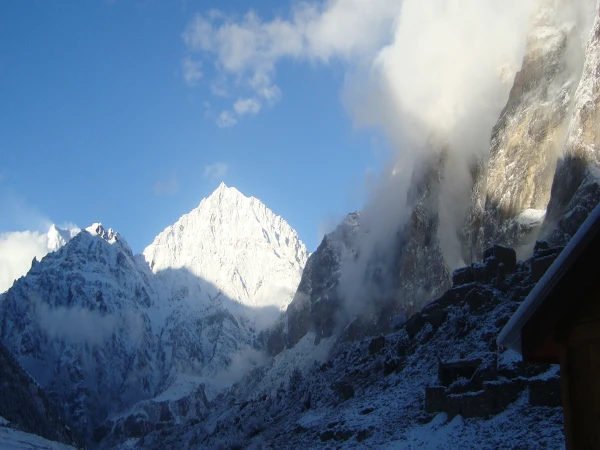
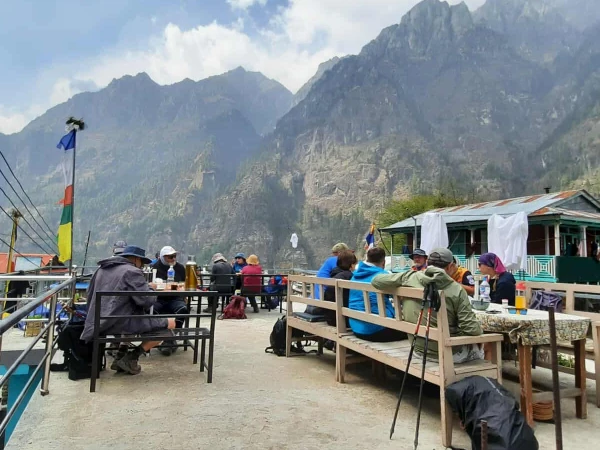
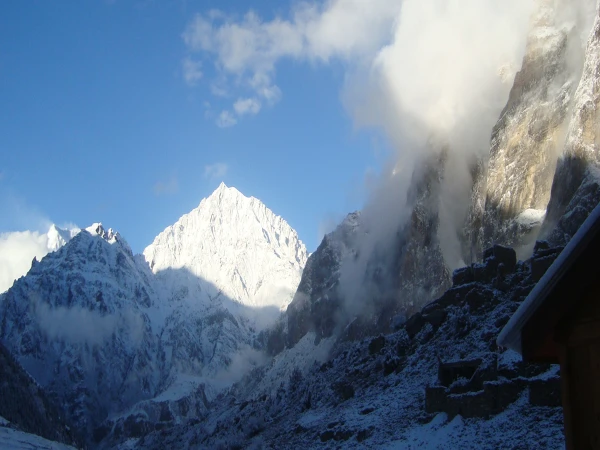
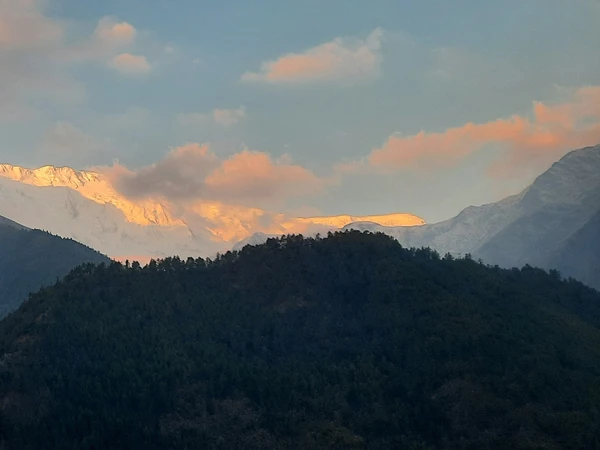
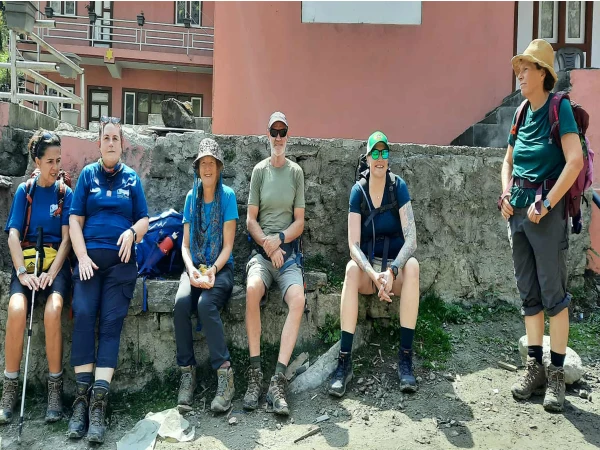
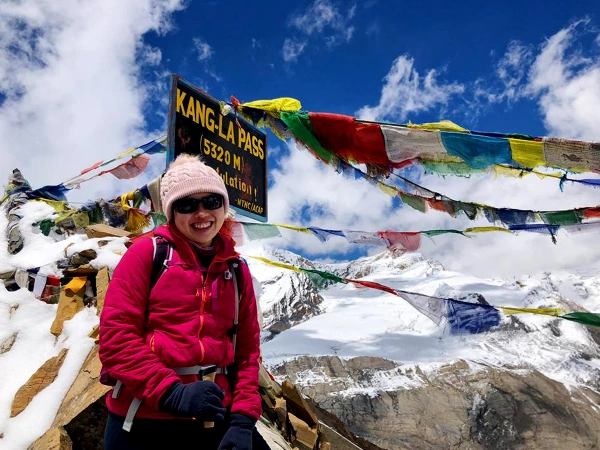

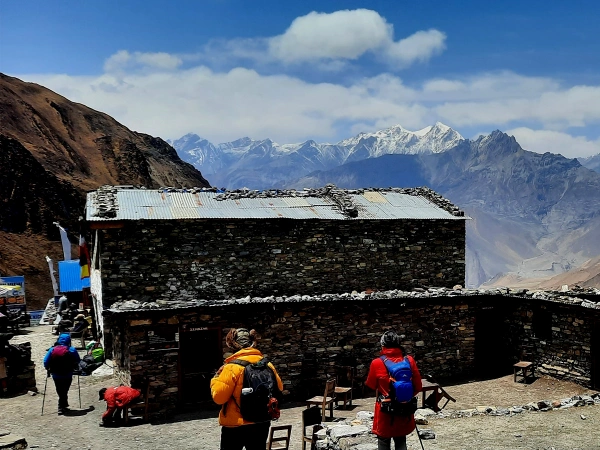
Short Itinerary
Kathmandu Arrival: Airport Pickup and Transfer to Hotel
Kathmandu City Sightseeing and Trek Preparation
Bus to Besisahar, Shared Jeep to Jagat
Trek from Jagat to Dharapani
Approximately 6 Hours Trek to Koto
Trek to Meta Village 6hrs approx.
Meta to Phu Gaon 9-10 km 5-6 hrs trek
Acclimatization day
Trek to Nar Phedi from Phu Village
Trek to Nar Village short distance Walk
Cross Kang la Pass, then trek to Ngawal BIG Day
Ngawal to Besisahar by Local jeep shared (60 km approx.) 6-7hrs
Bus Drive Back to Kathmandu
Nar Phu Valley Trek - 13 days Itinerary
Kathmandu Arrival: Airport Pickup and Transfer to Hotel
Upon your arrival at Tribhuwan International Airport (TIA) in Kathmandu, a representative from Nepal Spirit Adventure will greet you. They will assist with your transfer to the hotel. Depending on your arrival time in Kathmandu, we can hold a question-and-answer session about the Nar Phu Valley trek. If you arrive at night, we can discuss it the following day while you enjoy a full rest day in Kathmandu.
Kathmandu City Sightseeing and Trek Preparation
Today is your second day of the Nepal Nar Phu Valley Trek. Breakfast is included. The tour guide will pick you up from the hotel at 9 AM, start your Kathmandu Valley city sightseeing tour, including the most historical and spiritual attractions, and cultural heritage sites.
- Kathmandu Durbar Square
- Swayambhunath, the famous monkey temple
- Boudhanath Stupa: Buddhist shrine, which is also one of the largest stupas in the world.
- Pashupani Temple, the sacred Hindu temple
Enjoy Nepal’s creative arts, sculpture, and monuments with our tour guide (option: only driver and vehicle also available).
Later at noon, at the hotel, we will have a short meeting about the Nar Phu Valley Trek program itinerary, an introduction with the trek guide, and he will re-check your trek equipment. Trek sleeping bag, down jacket, and duffle bag are provided by NSA, but do not forget to return them to the company after the trek. If you do not have your trek equipment, you can shop near your hotel and overnight in Kathmandu.
Bus to Besisahar, Shared Jeep to Jagat
From Kathmandu to Besisahar by bus, and a jeep shared to Jagat (35 km), about a 2-hour jeep ride. We'll start the journey early in the morning as we have a long drive ahead of us. Pick up the packed breakfast from the hotel and leave Kathmandu at 6 AM. It is a long drive, but you’ll see picturesque views of the countryside, lush greenery, Trisuli Rivers, villages, farms, and mountain vistas en route throughout the drive, reaching Besisahar, then change to the shared jeep transportation for Jagat village.
The road condition from Kathmandu to Besisahar is good. The road between Besisahar and Jagat is off-road and bumpy through the Marsyangdi River, but the view is excellent. After approximately two hours' drive, you will arrive at Jagat Gurung village at 1350 meters for an overnight stay.
Trek from Jagat to Dharapani
Upon breakfast, we slowly begin our trek today. The trail from Jagat descends until it reaches the river and then continues through a lush forest. Further ascent leads to a sharp-edged cliff facing the riverbank. En route, Chyamje comes into the picture amidst the glorious backdrop of the towering Annapurna mountain ranges. After crossing a suspension bridge, we climb steeply towards the slippery and physically challenging path to Sattale. On treading along a succession of rock-strewn trails, we descend to a grassy riverbank that leads to Tal. As we walk away from Tal, the path becomes rugged and winding. Then we approach the steep forested village of Karte. Meandering along the waterfalls and cliffs, we finally reach Dharapani after crossing a suspension bridge. Overnight in Dharapani.
Approximately 6 Hours Trek to Koto
Today, the Nar Phu Valley walk starts after breakfast. The Koto village is at an altitude of 2,620 meters, and it takes about 6 hours to trek from Dharapani. The trip leads trekkers deeper into the Nar Phu Valley region of Nepal. We will walk through dense forests of pine and fir, crossing wooden bridges. One of the highlights of this day is the Bagarchhap village (2,160m). It is a small Tibetan-style village popular for its whitewashed monastery (Gompa) and prayer wheels (mani wheel) lining the route. The path continues through towering trees, leading our way to Danaque and then to Timang (2,750m). This section is the most rewarding one.
We can have a lunch break at Timang! Continue trekking, the areas offer trekkers stunning views of various mountain peaks, such as Mount Manaslu and Peak 29 (Ngadi Chuli, 7,871m). Gazing at mesmerizing Himalayan views, we will hike towards the Koto Village. Koto Village serves as the gateway to Nar Phu Valley. All the trekkers must register at the checkpoint to enter this village. Nar Phu lies in a restricted area of Nepal.
Trek to Meta Village 6hrs approx.
Today, your trek distance is quite long, approximately 13 to 14 km from Koto to Meta village in Nar Phu valley. In the morning, we register our restricted Nar Phu trek permit at the Police Check Post. Then we trek through the riverbank of Soti Khola again through wonderful pine forests, streams, and suspension, and reach Dharmasala. We have our packed lunch on the way. We then continue the trek through forests and ascend steeply towards Meta village. Finally, we arrive on the Tibetan Plateau, which offers a magnificent view of Annapurna II and Lamjung Himal. This village is Meta Gaun for an overnight camp.
Meta to Phu Gaon 9-10 km 5-6 hrs trek
Breakfast Meta. We'll start walking downhill from Meta village along the bank of Phu Khola through the nearby desert gorge, offering breathtaking views of Kangaroo Mountain, Pokharkan, and Amotsang Himal. Crossing suspension bridges over different streams. The trail takes us past beautiful Buddhist chortens (cairns/shrines) with views of spectacular gorges, canyons, and ruins of Tibetan-style forts. The first Tibetan migrants arrived in Phu Gaon nearly 200 years ago. Crossing a suspension bridge again, we reach Phu, from where we can visit Tashi Lhakhang Monastery.
Acclimatization day
Today is the scheduled acclimatization day, whereby we are advised to rest and get acclimatized to the altitude. As we are in the Lost/Hidden Valley, we can explore the culture, natural diversity, and religious practices of the ethnic groups like Lama, Gurung, and Ghale in here. Besides this, we can trace how people make their survival depending on agriculture, animal breeding, and seasonal migrations in such remote locations or the hidden valley. It is a good choice to take an acclimatization here, we can visit: Tashi Lakhang Monastery – the old Buddhist Monastery listed among the 108 world’s great Buddhist Monasteries; it is supposed to be the last monastery constructed by Karmapa Rinpoche. Apart from exploring the cultural avenues of the lost valley, the valley also offers us a great view of Himlung Himal and other snow peaks in the region. Overnight at Phu Gaon.
Trek to Nar Phedi from Phu Village
Enjoy with morning breakfast at Phu Village, then we retrace our steps slightly as we head towards Nar Phedi. We hike downhill from Phu village along the banks of Phu Khola, crossing a bridge spanning an 80m deep narrow canyon. It is a breathtaking and dramatic part of the trail.
We descend towards Mahayandra Pool, the trail takes a steep descent before reaching Nar, where we spend the night in a teahouse. Before that, we visit Nar Phedi Monastery, where we attend evening prayers with the nuns. We also share a home-cooked dinner prepared by the nuns and experience the daily life of the monastery. Trekkers are welcome to donate and light oil lamps for loved ones, making this a spiritually enriching experience.
Trek to Nar Village short distance Walk
Today our trekking distance isn't far, approximately (3 km), a 2-3 hour walk from Nar Phedi, mark you easy and almost rest and more explore day at Nar village. The trek path is a scenic route through Buddhist settlements and multiple monasteries.
We start from Nar Phedi, visiting Buddhist monasteries and Buddhist settlements decorated with mantra flags and some arts of Buddha stupa (chortens).
After Yughat, we reach the second gate of Nar Valley. It signals our arrival in an ancient village, which is rich in Buddhist monasteries, Tashi Lhakhang Monastery. It takes us 2 -3 hours to reach Nar village from Nar Phedi. The rest of the day, we will enjoy the exploration of Nar village.
Cross Kang la Pass, then trek to Ngawal BIG Day
Today is a big day of adventure in the Nar Phu Valley. Because we will trek to Ngawal village through the high pass Kang La at (5,320 m). A huge high-altitude trekking pass, which requires 7-8 hours, is quite challenging as well.
We begin our day early, departing Nar Village (4,110m) around 4 a.m. The initial two hours involve a gentle ascent, allowing our bodies to warm up before tackling the steeper, rugged sections leading to the Kang La Pass (5,320m). Upon reaching the summit, trekkers are rewarded with panoramic views of the Annapurna Massif, Gangapurna, Tilicho Peak, and Annapurna II. We will descend from Kang la and stay overnight in a teahouse in Ngawal, and celebrate a successful trek dinner.
Ngawal to Besisahar by Local jeep shared (60 km approx.) 6-7hrs
The Ngawal village is directly connected to the road. We will take a local shared Jeep from Ngawal to Beshisahar. Due to the road condition, the bus still cannot reach this village. We hope the bus service can be reached sooner there. Jeep transport is the only option for transportation to Besisahar from Ngawal on the route. We will have our lunch on the way. It will take around 6-7 hours to reach Beshisahar for an overnight stay. The overland journey can make you feel uncomfortable journey and we have to feel happy ourselves. The private jeep is also available from this area paying by an extra cost. Deal with the Nepal Spirit Adventure Manager for a special cost.
Available Option: Another option is available by trekking to Besisahar, but you need an extra 2-3 days.
Bus Drive Back to Kathmandu
Driving from Besisahar to Kathmandu, approximately 176 kilometres, typically takes 6 to 7 hours, depending on traffic and road conditions. The route primarily follows the well-maintained Prithvi Highway with stunning views of lush green hills, valleys, and rivers, including the Marshyangdi River.
As you drive, you’ll experience a blend of rural Nepalese culture and breathtaking mountain vistas, especially of the Annapurna range, on clear days, making this journey not just a means of transport but a memorable scenic adventure.
Cost Details
Includes
- Private transportation for arrival and departure (International & domestic)
- Three-night hotel in Kathmandu with breakfast (twin shared bed)
- Kathmandu to Jagat by bus
- Special trekking permit for Nar Phu Valley
- Annapurna trekking route permit (Conservation)
- Lodge accommodation during the trekking
- Hygienic meals: Breakfast, lunch, and dinner with a cup of tea or coffee
- Experience trekking guide, including his daily wages: Transportation, food, lodge, salary, and insurance
- One trek porter for two trekkers, including his daily wages: Transportation, food, lodge, salary, and insurance
- Trekking equipment: Sleeping bag, down jacket, and duffel bag
- Flight from Jomsom to Pokhara
- One-night hotel in Pokhara with breakfast
- From Pokhara to Kathmandu by tourist bus
- A comprehensive medical kit
- Travel and rescue arrangements
- All government and local taxes
Excludes
- Nar Phu Valley trek personal equipment
- Nepal visa
- Travel and Nar Phu Valley trekking insurance
- Private transportation between Kathmandu and Besisahar
- Besisahar to Dharapani/Pisang to Besisahar private transportation
- Personal expenses such as alcoholic and non-alcoholic table drinks
- Extra night accommodation in Kathmandu (due to an early return from a trek or an extended stay in Nepal)
- International flight ticket
- Tips for the trek guide and the porter of Nar Phu Trekking
Dates & Availability
Private TripOnline published trip departure dates are confirmed for organizing the treks. If the date isn't convenient for you, we're happy to open a new trip date. Private trek can organize all the seasons in a year.
Essential Information
Do You Provide Airport Pickup Upon Arrival in Kathmandu?
Welcome to Nepal Spirit Adventure, the leading trekking company in Nepal. We are pleased to inform you that we will arrange your airport pickup in Kathmandu based on your international flight arrival schedule. This pickup service from Tribhuvan International Airport is included in the Nar Phu Valley Trek package.
Please Note:
We also offer free transportation for your airport drop-off from your Kathmandu hotel at the end of your trekking holiday. Feel free to coordinate with our transport manager for this service.
Is the Kathmandu Hotel Inclusive? What Can I Expect?
That's a great question! We provide a minimum of two nights of hotel accommodation in Kathmandu at a tourist-standard level (twin-share base room), including a delicious breakfast. Our hotel is situated in a prime location, close to historical sites, restaurants, and shopping centers, making it convenient for you to pick up trekking equipment for Nar Phu Valley.
We offer you flexibility and a variety of choices regarding your Kathmandu hotel stay. If you would prefer to stay in a more upgraded hotel, please feel free to reach out to our reservations or booking manager.
Is the Nar Phu Valley Trek Safe for Me?
Trekking in the Nar Phu Valley is completely safe, and Nepal Spirit Adventure takes full responsibility for your safety, making it our top priority to ensure you have a fantastic trekking experience with our high-quality services.
The main safety concern is altitude sickness, but the risk of this is very low. Some parts of the trail may be narrow, so you'll need to be cautious when passing local porters who carry heavy loads and may not always see you. It’s best to step aside and let them pass safely.
You will also encounter many donkeys and yaks on the trail. When passing them, be sure to stay on the inside, away from the edge, especially where there are steep drop-offs. If you remain close to the Cliffside, a donkey could inadvertently push you off, which could lead to injury.
On the trek route in high altitude section, you’ll meet YAKS for yaks, please keep a safe distance when you see them on the trail. They have been known to be aggressive if approached too closely, so it's important to prioritize your safety. For your remarkable trek in the Nar Phu Valley, you need a highly capable, experienced local Sherpa trek guide.
Transportation between Kathmandu and the Trekking Area
For your arrival and departure at the international airport, a tourist-standard private vehicle is included. From Kathmandu to Beshisahar and back, you will travel by local bus, which is comfortable. (You also have the option to upgrade to a private vehicle for an additional cost.)
For the journey from Beshisahar to Dharapani, where the trek begins, and back to Beshisahar after the trek, we will use local jeep transportation, allowing you to enjoy a classic experience. (A private jeep is available as an option for an extra fee.)
What Type of Accommodation is Available on the Nar Phu Valley Trek?
Fifteen years ago, the trek to Nar Phu Valley was only possible through camping, with tent accommodations. However, it is now possible to do a teahouse (lodge) trek. As time has progressed, accommodation options in the Nar Phu Valley trek have been improving year by year. Most of the trails connecting Nar and Phu villages feature teahouses and guesthouses, but don’t expect luxury; accommodations are quite simple, typically offering beds and blankets in each room.
During the high season, you may have to share a room with other trekkers. In Meta, there is a newly built guesthouse with basic services, as well as similar accommodations in Kyang and Phu. Most guesthouses provide shared bathrooms.
The accommodation at Satek Gompa is slightly nicer, although the bathroom is still communal. After you cross the Kangla Pass and descend to Ngwal village, you’ll find the accommodation to be a special reward. The rooms in Ngwal are an upgrade from those in Nar Phu Valley, featuring nicer amenities and attached bathrooms.
In conclusion, if you are familiar with trekking or are willing to compromise a bit on comfort for the breathtaking beauty of the Himalayas, you will not be disappointed.
What Kind of Food and Beverages are available on the Nar Phu Valley Trek?
The food on the Nar Phu Valley Trek is fantastic! You will enjoy the delicious vegetables, most of which are grown locally. What is available may vary depending on the season. From May to October, you can savor local dishes such as Sherpa stew, dhindo, roti, and Dal Bhat. As winter approaches, the weather becomes cooler and cloudier, leading to a greater reliance on vegetables brought in from other villages, though they are still tasty.
On the route of this trek, in each guesthouse, there are usually Western options available, including pizza, macaroni, fried noodles, and pasta. The beverage team in most of the villages also has candy bars, bottled soda, and beer. Most locals drink Tibetan tea, which is made with butter, salt, and wheat flour. You should try it at least once during your trek. If that doesn't appeal to you, you can also order black tea, green tea, or milk tea. Sampling the local Himalayan dishes is always a memorable part of the trek!
What is the Condition of the Trekking Path along the Nar Phu Valley?
The trekking trail to Phu Village is long but well-maintained and safe. This year, the local community has built an additional trail along the route. While hiking, it's important to stay on the inner part of the trail, as the edges can have loose stones.
After the Kangla Pass, the path becomes steep, descending for about one hour. However, it remains safe, especially if there is no snow. We recommend using hiking poles during the trek to help with balance and reduce the impact on your knees and ankles.
Is Drinking Water Safe on the Trek?
Drinking water is very important for all trekkers on the Nar Phu Valley Trek. While water is available along the journey, it is highly recommended not to drink it without filtering it first. If you plan to drink water from natural sources, using a water purification system is essential.
During this high-altitude trek, it's advisable to drink at least 3-4 liters of water a day to prevent dehydration and minimize the risk of altitude-related problems, such as Acute Mountain Sickness (AMS). Whenever possible, opt for sealed, bottled mineral water, which is available in local shops and teahouses.
Please keep in mind that while river, spring, and tap water may look clean and free as well but it is not safe to drink without proper purification, such as using purification tablets or a filter. Additionally, you can purchase boiled water from lodges along the trek. The cost for boiled or sealed bottled water ranges from $1 to $3 per liter, depending on how high you are above sea level. Therefore, it's important to prepare and budget for these extra expenses for all your drink needs.
Health and Physical Fitness Requirements for the Nar Phu Valley Trek in Nepal
Health and physical fitness are crucial for anyone participating in the Nar Phu Valley trek. If you lack previous trekking experience, we recommend starting a morning walking or cycling exercise routine for several weeks or months before your trip. Having prior trekking and climbing experience will be advantageous, but the majority of this trek involves non-technical walking.
The highest elevation on this trek is 5,320 meters at Kangla Pass. The journey includes various ups and downs, taking you through local villages, farmlands, terraces, and riversides. You should be prepared to walk for 5 to 6 hours a day. While previous experience is beneficial, a moderate level of health and fitness is still required.
We strongly advise all travelers to consult their medical doctor before joining the Nar Phu Valley trek of the Annapurna region for safety wonderful trip in Nepal.
Is a Necessary Acclimatization Day Essential on the Nar Phu Valley Trek?
An acclimatization day is crucial when trekking at high altitudes, as it allows your body to adjust to the lower oxygen levels. It also provides valuable time to explore the ancient villages of Nar and Phu while enjoying stunning mountain views. Our itinerary includes one and a half days of acclimatization. If you have additional time and wish to spend more time in Nar and Phu villages, you can certainly extend your trek by another day or two. This added time will enable you to connect more with the locals and make the rest of the trail easier for your body.
Although the trek leads high into the Himalayas, you will not be spending any nights above 4,000 meters. Therefore, one day in Phu village and a half-day in Nar village should be sufficient for acclimatization.
Can we Charge Batteries for Electronic Devices on this trek?
Yes, in most locations, you can find facilities to recharge your batteries and devices using electricity or solar power sources. In Nepal, the power supply is 220-240 volts at 50 Hz (50 cycles per second). You will need a plug adapter for socket compatibility, which you can purchase in Kathmandu before starting your trip if you don’t already have one, as the plug adapters in Nepal may differ from those in your country, but you can easily get one in Kathmandu. Please note that there might be a small fee per hour for using the charging facilities.
Is a trek guide and a porter required for the Nar Phu Valley Trek?
A trek guide is mandatory for this trip. The Nepal government will not issue the trekking permit for the Nar Phu Valley as this area is restricted, and having a guide is for your safety. If you’re able to carry all your trekking equipment by yourself, you do not need to hire a porter. However, for a more enjoyable and stress-free trekking experience, it is advisable to have one porter for every two trekkers. It would be your great pleasure to give a job to the local potter of this area.
Our Experience Trek Guide and Porter:
Our guides and porters are dedicated professionals who genuinely enjoy their work in the Himalayas. For many of them, trekking in this beautiful region is a dream job that they take very seriously. The cost of our trekking package includes meals, accommodation, transportation, salary, and insurance for both the porter and the guide.
With decades of experience trekking in the Himalayas, our guides ensure that your trip is successful and enjoyable. We also hold a deep respect for our porters, who earn a livable wage while happily carrying your bags and savoring the beauty of the Himalayas. Our responsible and dedicated team is here to help you succeed on your Nar Phu Valley Trek.
Experience the Nar Phu Valley Trek with Nepal Spirit Adventure!
Nepal Spirit Adventure is a top local trekking company in Nepal, registered with the Nepal Government. We have been organizing the Nar Phu Valley trek for decades and have extensive experience in providing exceptional trekking experiences. Our trek packages are reasonably priced and free from hidden costs, so you can book with confidence knowing that our trip departure dates are guaranteed.
We are committed to managing your trek with the highest standards of service. Your safety and satisfaction are our top priorities. If any issues arise during your journey, we will be there to support you to the best of our abilities. Our goal is to ensure you have an unforgettable experience on your Nar Phu Valley Trek and during your visit to Nepal.
Nar Phu Valley Trek - 13 days FAQs
The Langtang Valley trek is situated north of Kathmandu, the capital city of Nepal. This trekking route is part of the Langtang Region, which is the third most popular trekking area in the Himalayas of Nepal.
The Langtang Valley Trek is an easy hike and cultural journey located in the Langtang region. This trek reaches a maximum elevation of 3,840 meters at Kyanjin Gumba. Overall, the Langtang trek is considered to be straightforward, making it suitable for those looking for a less challenging high-altitude experience in the Langtang area.
We start and end this adventure from Syabrubesi, which requires approximately a 6-7 hour bus drive from Kathmandu.
It is approximately 122 km away and takes about a 6-7 hour bus journey from Kathmandu to Syabrubesi.
The best time to go to the Langtang Valley is from September to May. The weather is usually stable from September to December, with mild to warm days and cold nights. February, March, April, May, June, October, November, and December are the best times to do this trek.
The weather in the mountains is often unpredictable. If you're not properly prepared for the sudden changes and variability of conditions in this stunning area, you might find yourself in an uncomfortable situation. Here are some essential weather basics to help you arrive in the Himalayas well-equipped and ready for anything.
Generally, nights are much cooler than daytime hours. Many first-time trekkers are surprised by the significant temperature variations that can occur within a single day. During the day, temperatures can rise as high as 25 degrees Celsius (77 degrees Fahrenheit), only to drop to -20 degrees Celsius (-4 degrees Fahrenheit) within 24 hours. While it is impossible to predict the exact weather for each day in the mountains, you can expect certain trends based on the month and season.
Spring – March / April / May-June:
Spring is one of the best times of the year to visit the Langtang region, although it can become somewhat crowded during this season. You'll enjoy beautiful, clear blue skies and a variety of blooming flowers.
During spring, the average temperature is around 20°C (68°F), with a maximum of 25°C (77°F) on sunny days. In the mornings and at night, particularly in areas above 4000 meters, temperatures can drop to a minimum of -15°C (5°F).
Monsoon – July / August
Travel during the monsoon season is generally not recommended, as it tends to rain at lower altitudes (below 3500 meters). In areas above 4000 meters, there is occasional rainfall, but it can also be dry. Very few people travel during this season. However, trekking during the monsoon has its advantages; the increased rainfall creates stunning views of waterfalls, and it's the best time to avoid crowds.
During the monsoon months, the average temperature is around 22°C (71.6°F), with a maximum of 30°C (86°F) on sunny days. In the mornings and at night, temperatures can drop to a minimum of -5°C (23°F) in areas above 4000 meters.
Autumn: September / October / November
Autumn in the Langtang region is a popular trekking season, similar to springtime, and is considered one of the best times to explore. During this period, you can enjoy the beauty of blooming flowers and clear blue skies, providing stunning views from nearly every angle.
The average temperature in the fall is around 17 degrees Celsius (62.6 degrees Fahrenheit), with maximum temperatures reaching 20 degrees Celsius (68 degrees Fahrenheit) on sunny days. In the mornings and at night, temperatures can drop to a minimum of -15 degrees Celsius (5 degrees Fahrenheit) in areas above 4,000 meters
Winter – December / January / February
Winter lasts from mid-December to mid-February. Despite the colder temperatures, many people choose to trek during this time due to the reduced crowds. Visibility is still decent, although foggy conditions are common, so it is advisable to allow for extra days in your itinerary.
During winter, the average temperature is about 10 degrees Celsius (50 degrees Fahrenheit), with maximum temperatures of 17 degrees Celsius (62.6 degrees Fahrenheit) on sunny days. However, it can drop to a minimum of -20 degrees Celsius (-4 degrees Fahrenheit) in the mornings and evenings at altitudes above 4,000 meters. Please note that the above temperatures are based on the exterior of guesthouses. There is no need to worry about the cold, as we provide sleeping bags and extra blankets to ensure our clients stay warm during their stay.



